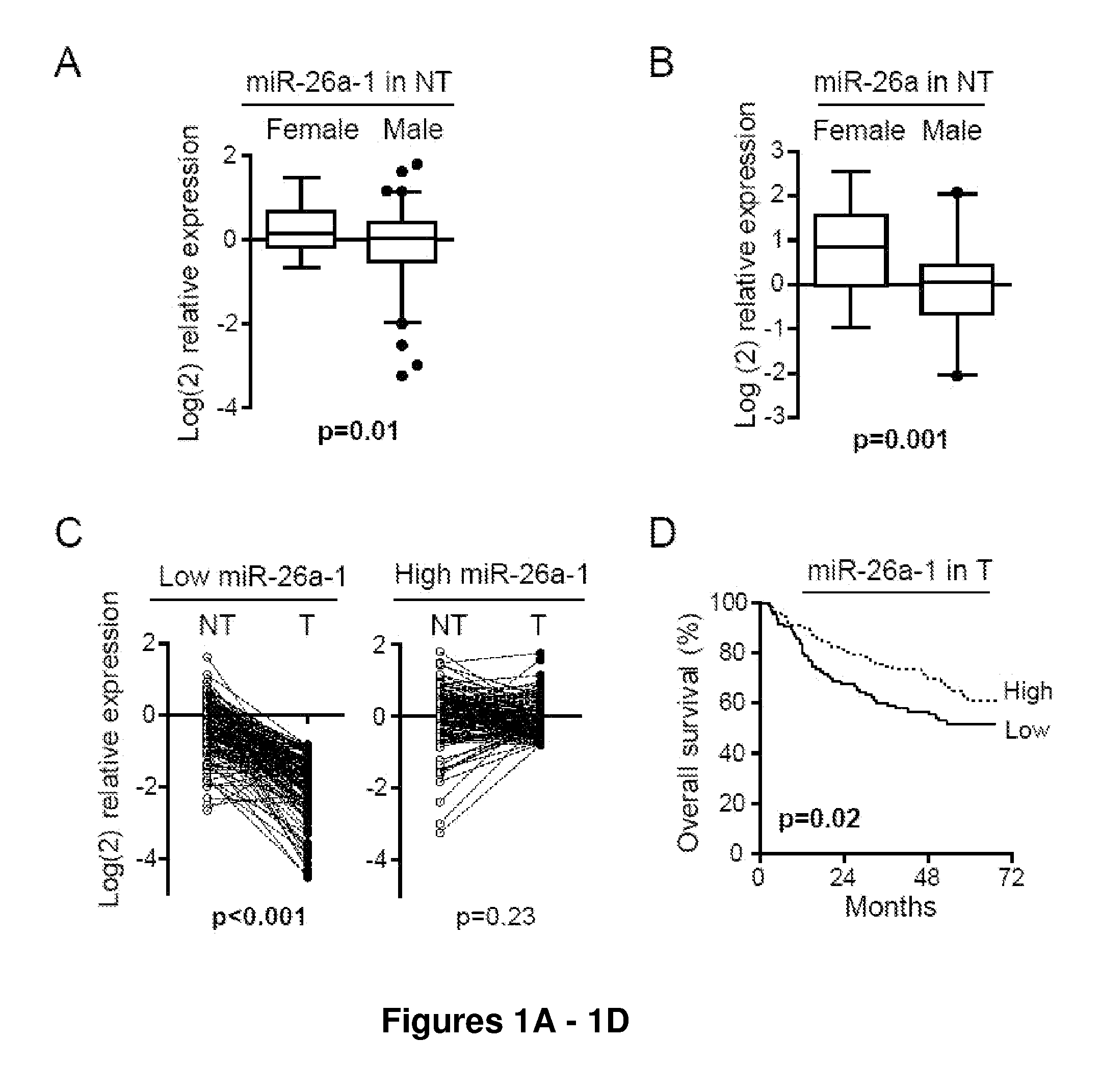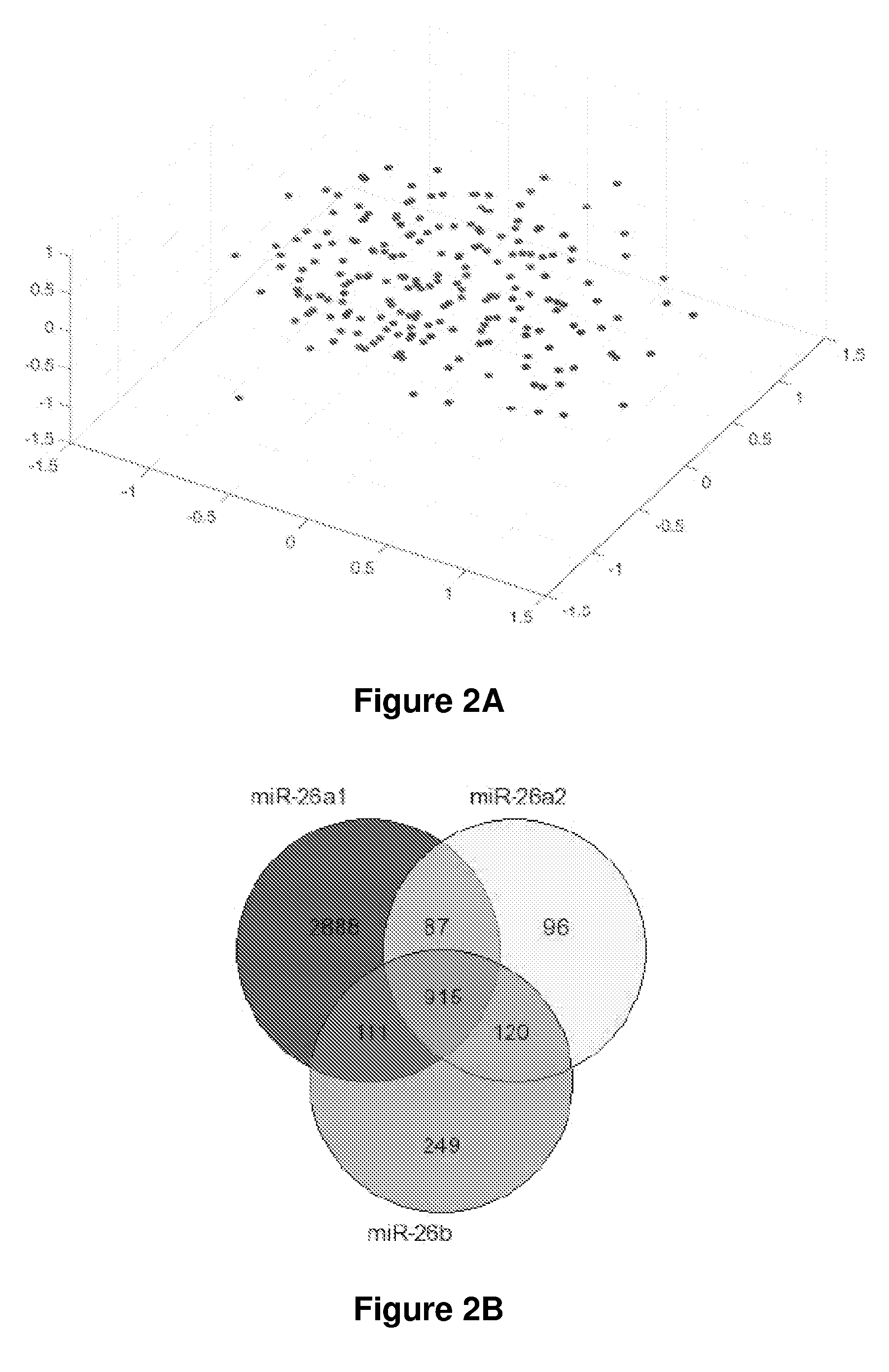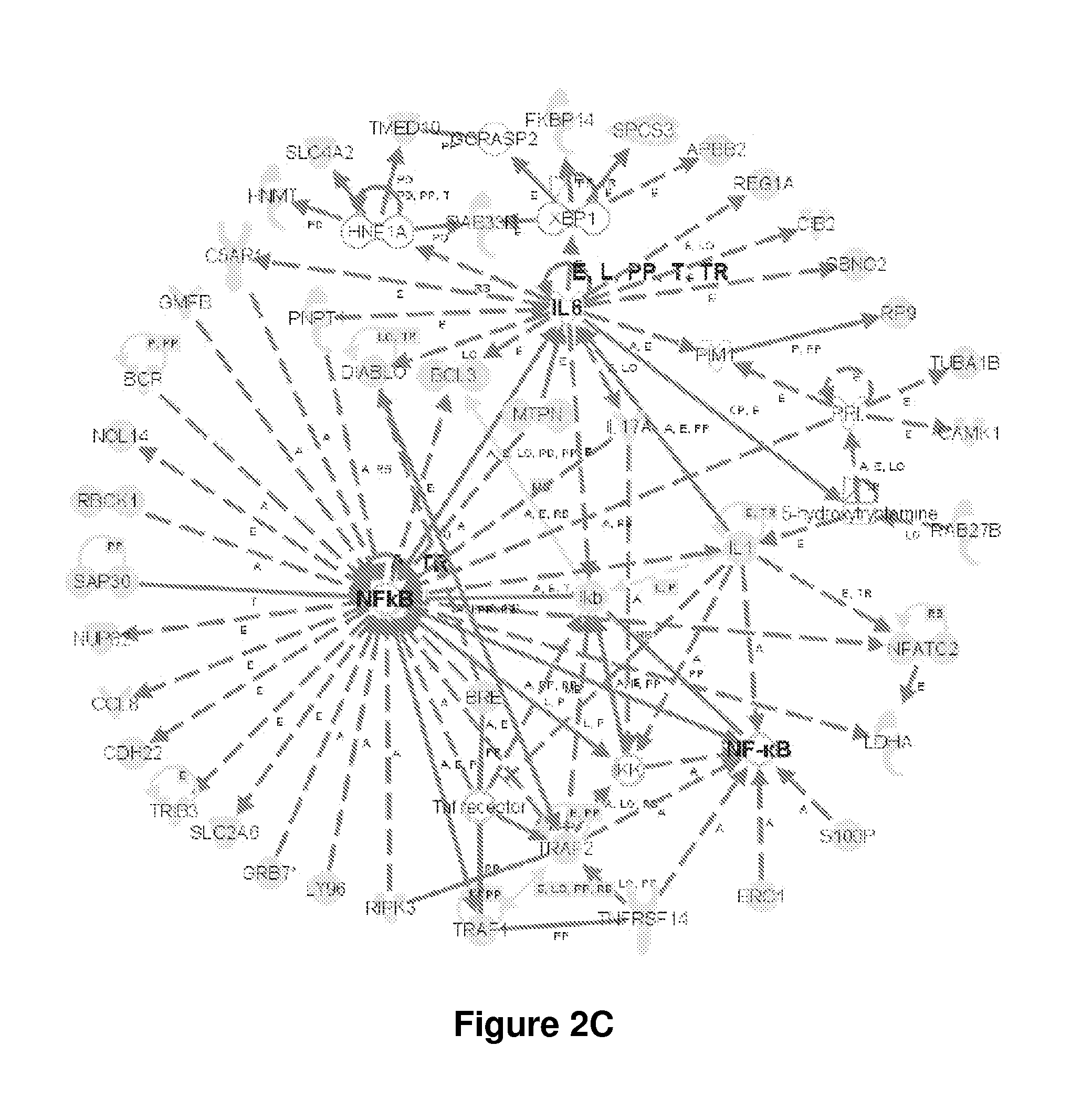Use of MiR-26 family as a predictive marker for hepatocellular carcinoma and responsiveness to therapy
a technology of hepatocellular carcinoma and family, which is applied in the field of identification of mir26, can solve the problems of high frequency of relapse in patients who receive curative resection, and achieve the effects of low expression level, favorable response to interferon (ifn)- therapy, and poor clinical outcom
- Summary
- Abstract
- Description
- Claims
- Application Information
AI Technical Summary
Benefits of technology
Problems solved by technology
Method used
Image
Examples
examples
[0173]The Examples below describe the analysis of gender-dependent microRNA profiles in HCC and their predictive values in survival prognosis and therapeutic outcomes. For these studies, two independent cohorts of 379 total HCC patients were analyzed. The first cohort was a test cohort to identify potential microRNAs associated with HCC. The second cohort (the validation cohort) was used to confirm the results obtained from the test cohort. Using this strategy, members of miR-26 were identified as gender-related microRNAs as they were more abundantly expressed in female hepatic tissues. In addition, the expression levels of miR-26 family members were significantly downregulated in a subset of HCC tumor samples as compared to their paired non-cancerous tissues regardless of gender. Tumors with reduced miR-26 expression had a distinct gene expression profile, and cases with low miR-26 expression were associated with poor survival prognosis. The data described below suggests that miR-2...
example i
Materials, Methods and Patient Characteristics
[0174]Clinical Specimens
[0175]Snap frozen or paraffin-embedded specimens of both tumors (T) and surrounding non-tumor hepatic tissues (NT) were obtained with informed consent from 455 HCC patients who underwent radical resection at the Liver Cancer Institute of Fudan University, Shanghai (376 cases) and at the University of Hong Kong Medical Centre, Hong Kong (79 cases), China (4). The study was approved by the Institutional Review Board of the corresponding institutes. A normal liver tissue sample pool was obtained from 8 disease-free liver donors (24). A previously described cohort of 241 HCC cases (cohort 1: test cohort), with available microRNA microarray data (22), was used to search for microRNAs associated with gender and survival. Among them, 17 had missing miR-26 expression data and 9 had missing survival data, leaving 224 cases for miR-26 expression analysis and 217 cases for survival analyses. HCC cases (n=135) from prospectiv...
example ii
RNA Isolation and Real-Time qRT-PCR Analysis
[0222]Total RNAs were extracted from frozen tissues of cohort 1 using standard TRIZOL (Invitrogen, Carlsbad, Calif.) methods, and from paraffin-embedded tissues of cohort 2 and cohort 3 using a MasterPure RNA Purification Kit (Epicenter, Madison, Wis.). The expression of mature microRNAs was measured using Taqman MicroRNA Assays specific for miR-26a and miR-26b after reverse transcription (Applied biosystems, Foster City, Calif.). All comparisons between strata (gender. miR etc) were within each cohort. The Taqman MicroRNA Assay for U6 RNA was used to normalize the relative abundance of microRNAs. The expression of IL-6 was measured using the Taqman Gene Assay specific for this gene after reverse transcription by using the High Capacity cDNA Archive Kit (Applied Biosystems, Foster City, Calif.). The Taqman gene assay for 18 s was used to normalize the relative abundance of mRNA. The experiments were performed in triplicate.
[0223]Microarray...
PUM
| Property | Measurement | Unit |
|---|---|---|
| molecular weight | aaaaa | aaaaa |
| molecular weight | aaaaa | aaaaa |
| frequency | aaaaa | aaaaa |
Abstract
Description
Claims
Application Information
 Login to View More
Login to View More - R&D
- Intellectual Property
- Life Sciences
- Materials
- Tech Scout
- Unparalleled Data Quality
- Higher Quality Content
- 60% Fewer Hallucinations
Browse by: Latest US Patents, China's latest patents, Technical Efficacy Thesaurus, Application Domain, Technology Topic, Popular Technical Reports.
© 2025 PatSnap. All rights reserved.Legal|Privacy policy|Modern Slavery Act Transparency Statement|Sitemap|About US| Contact US: help@patsnap.com



